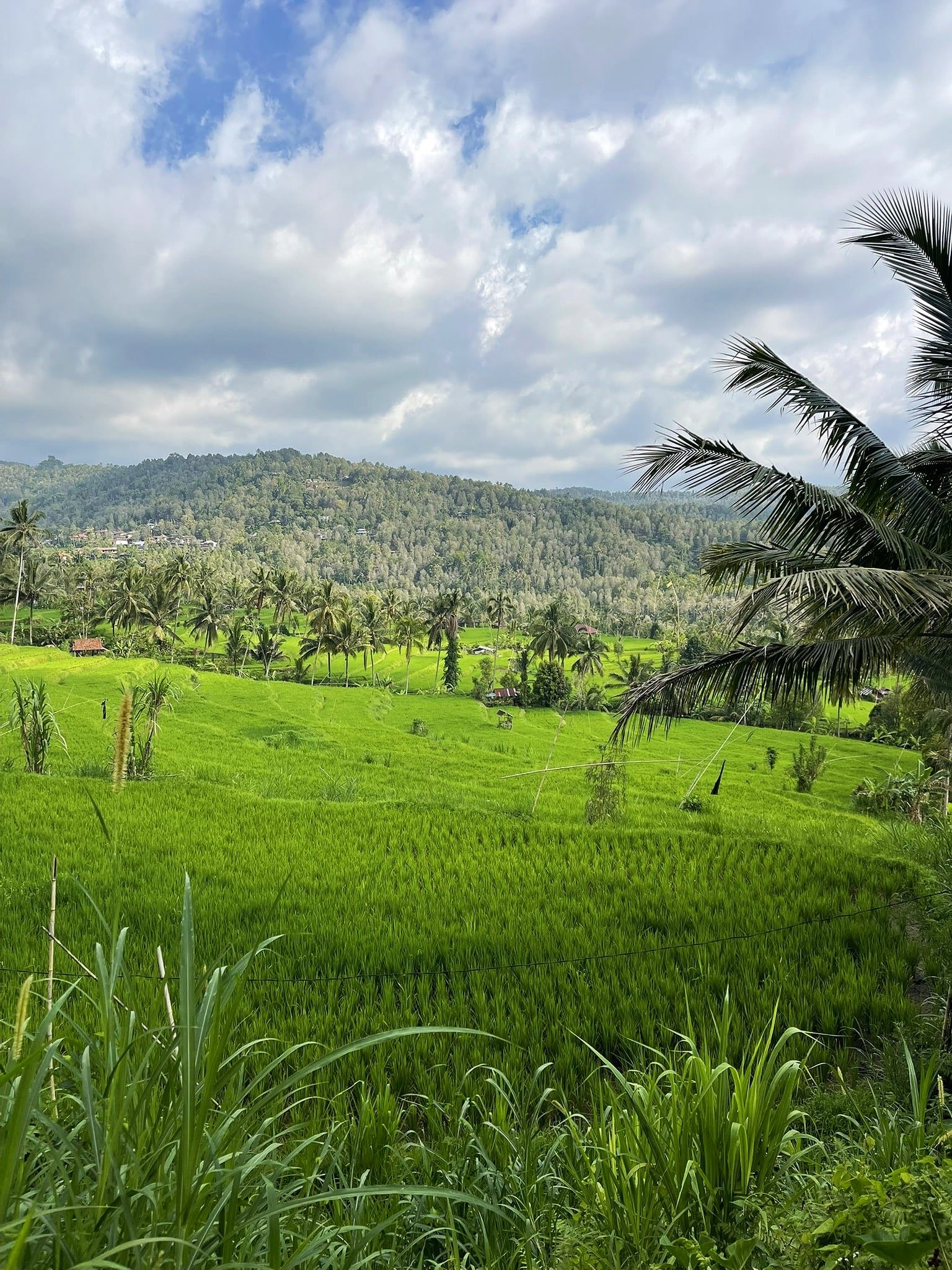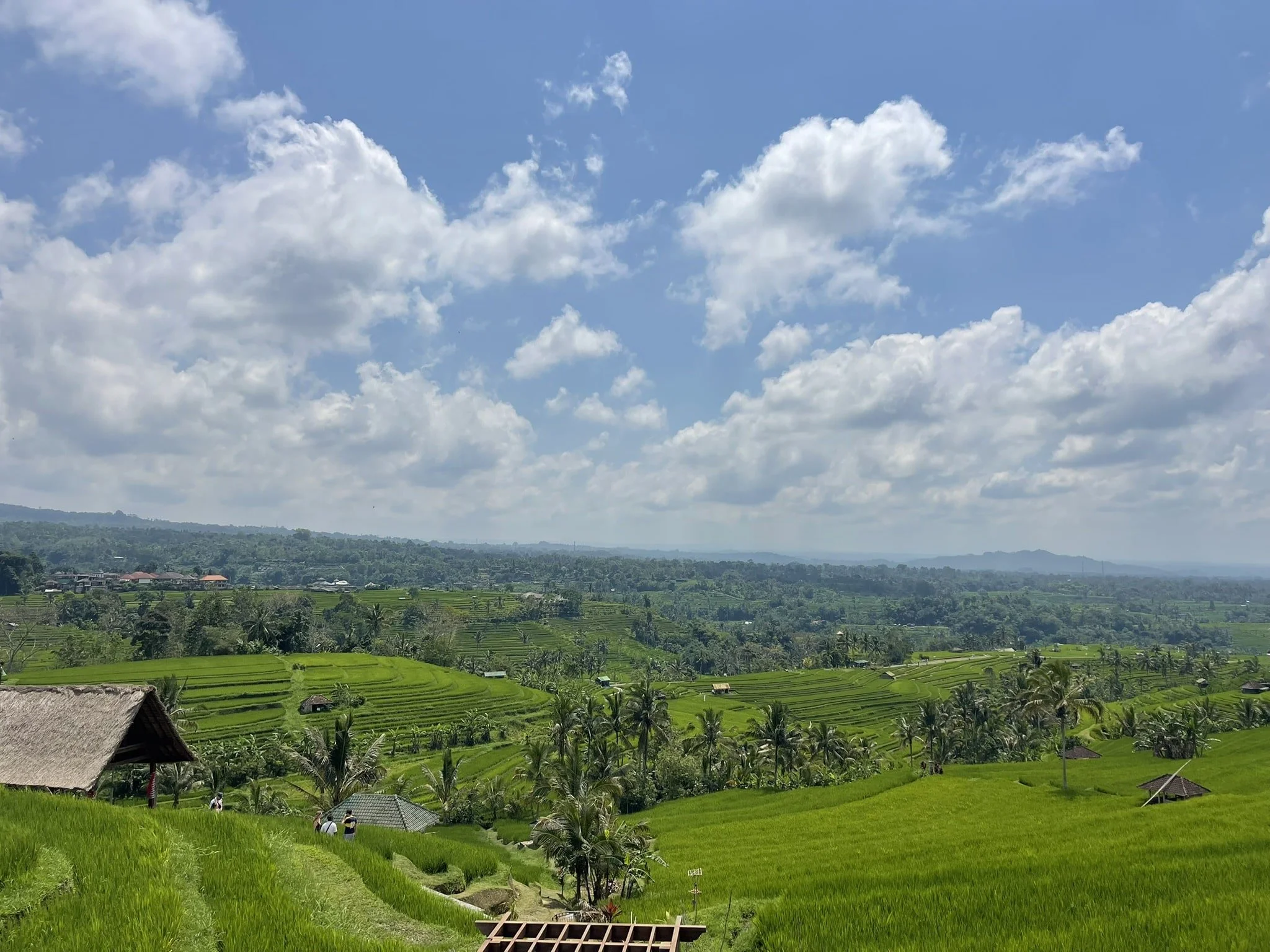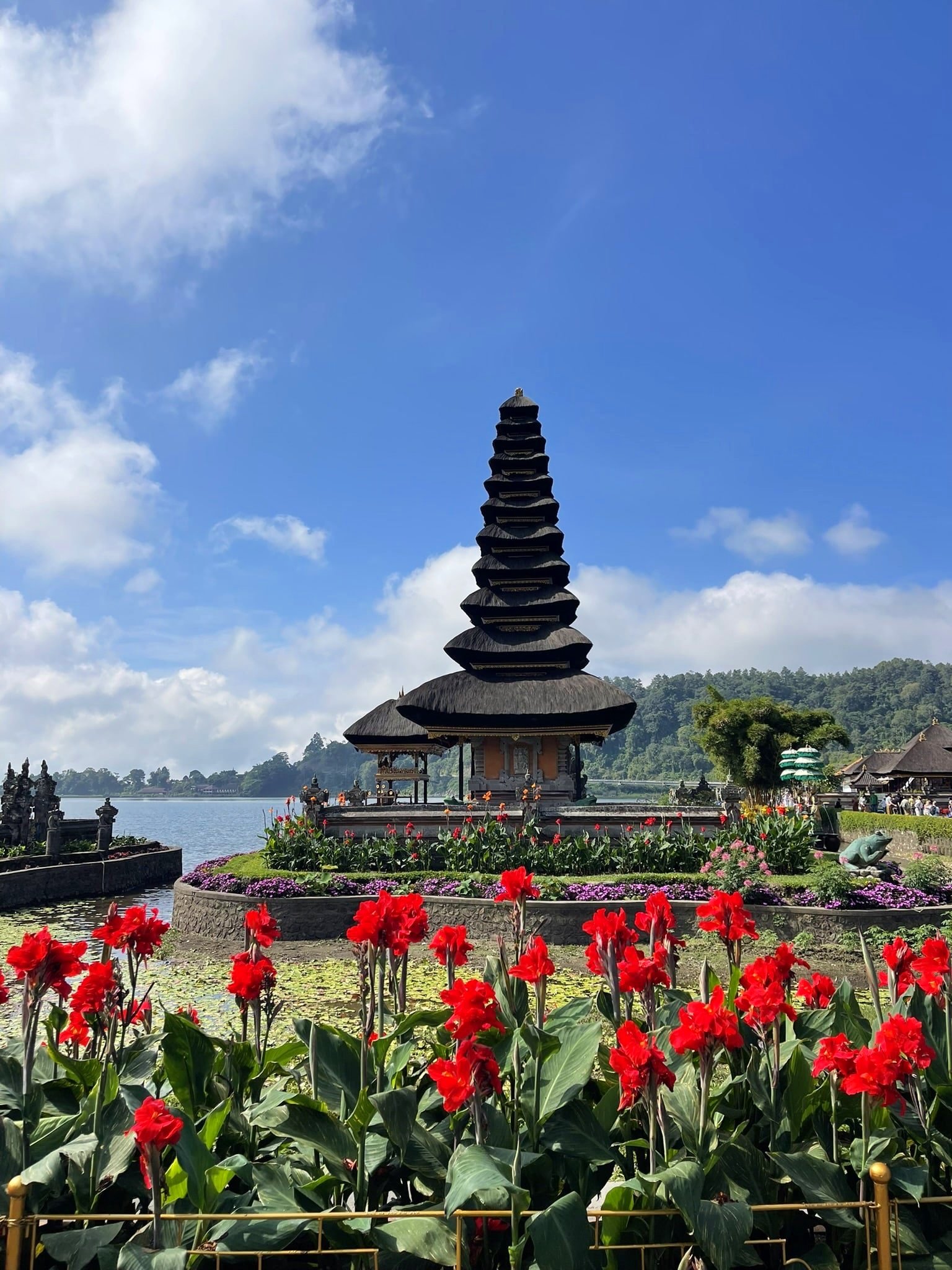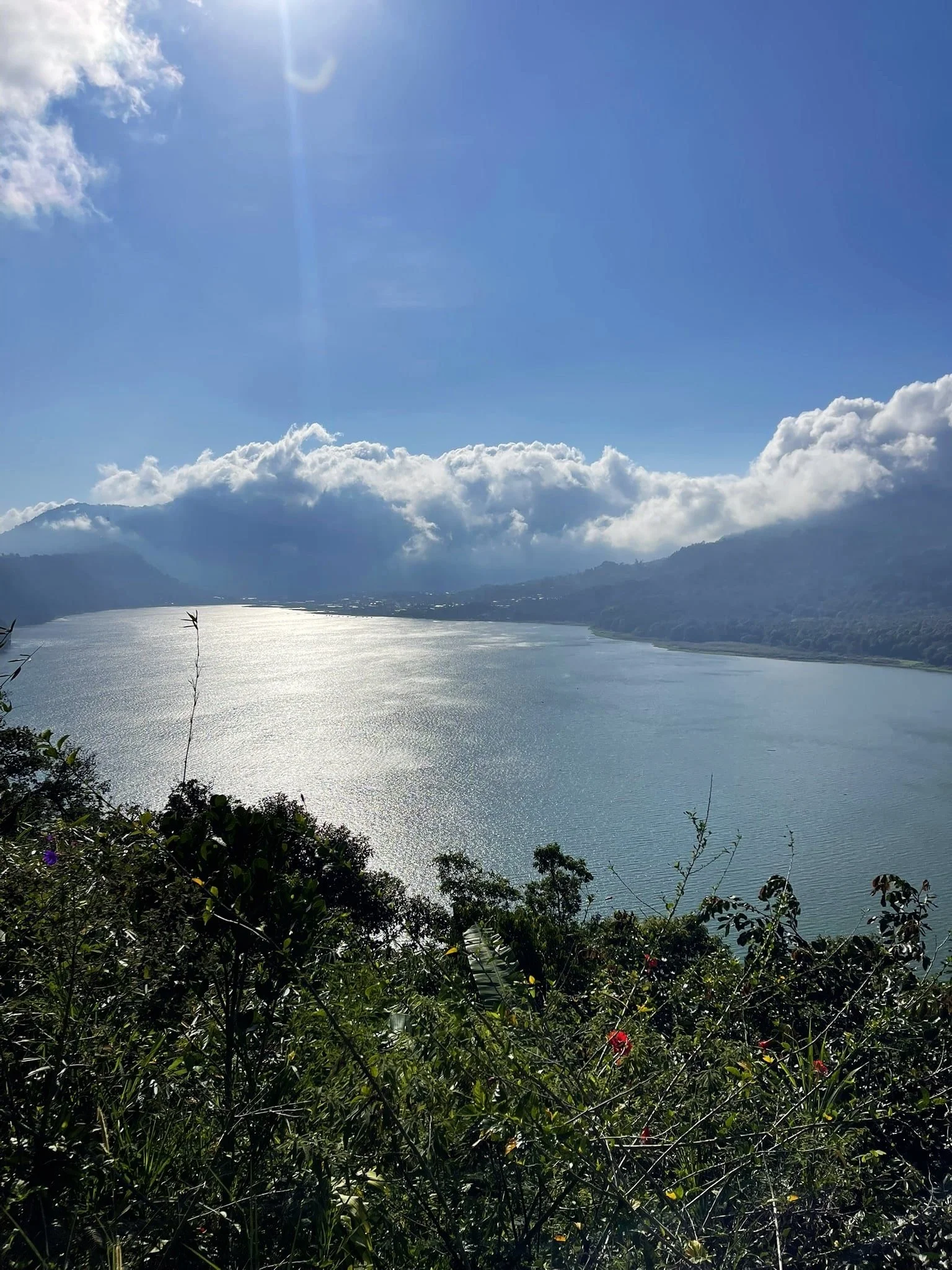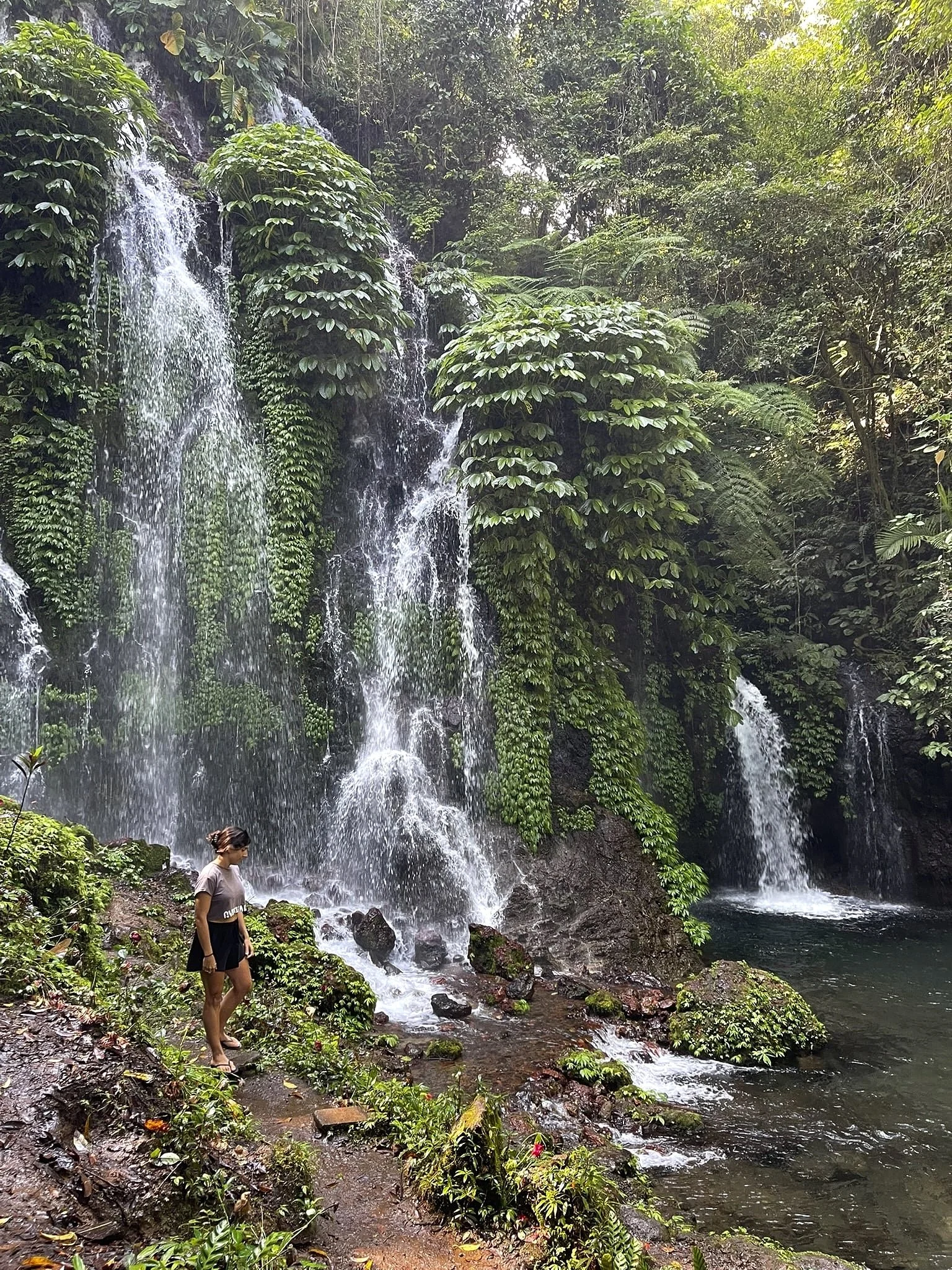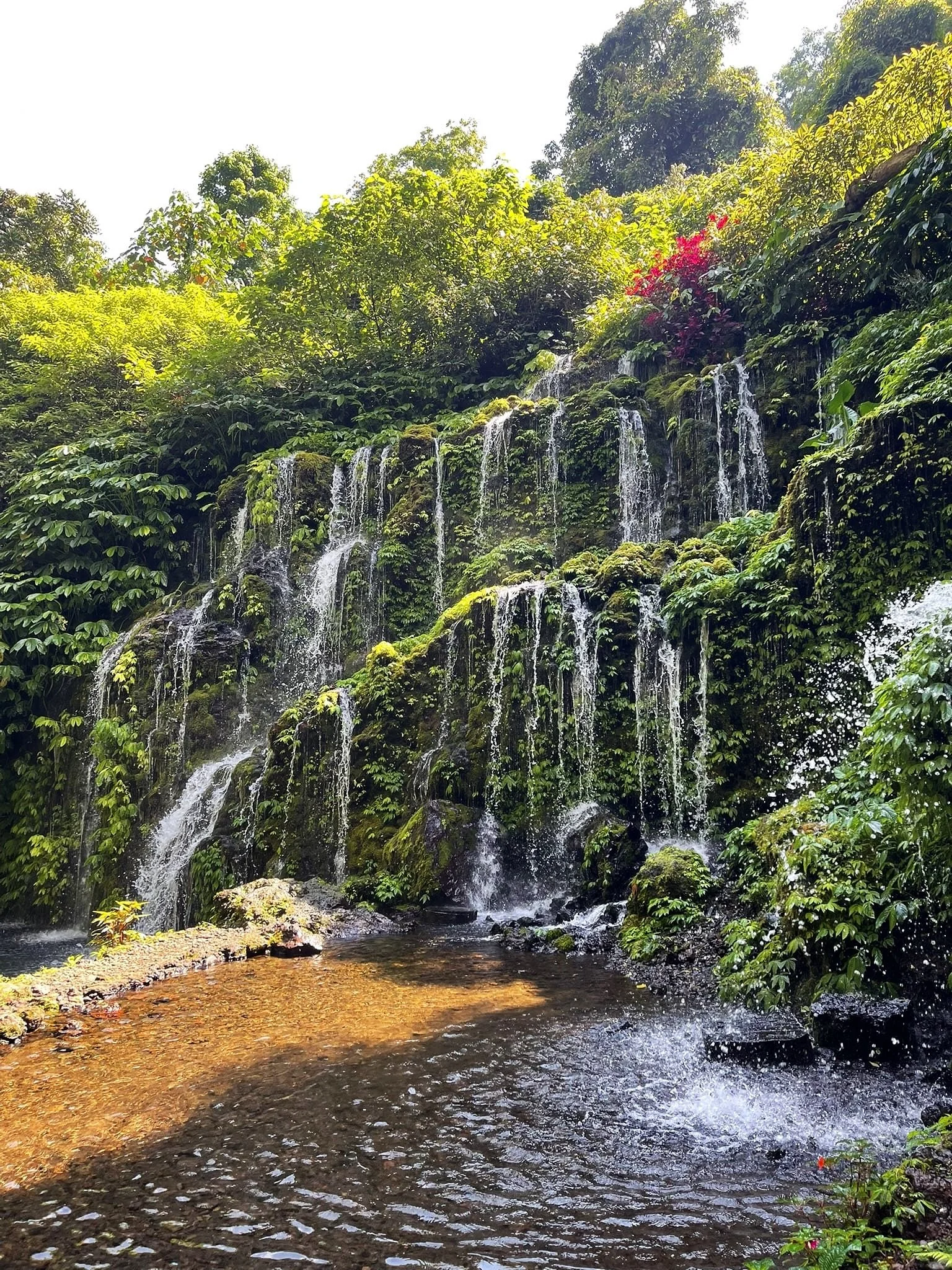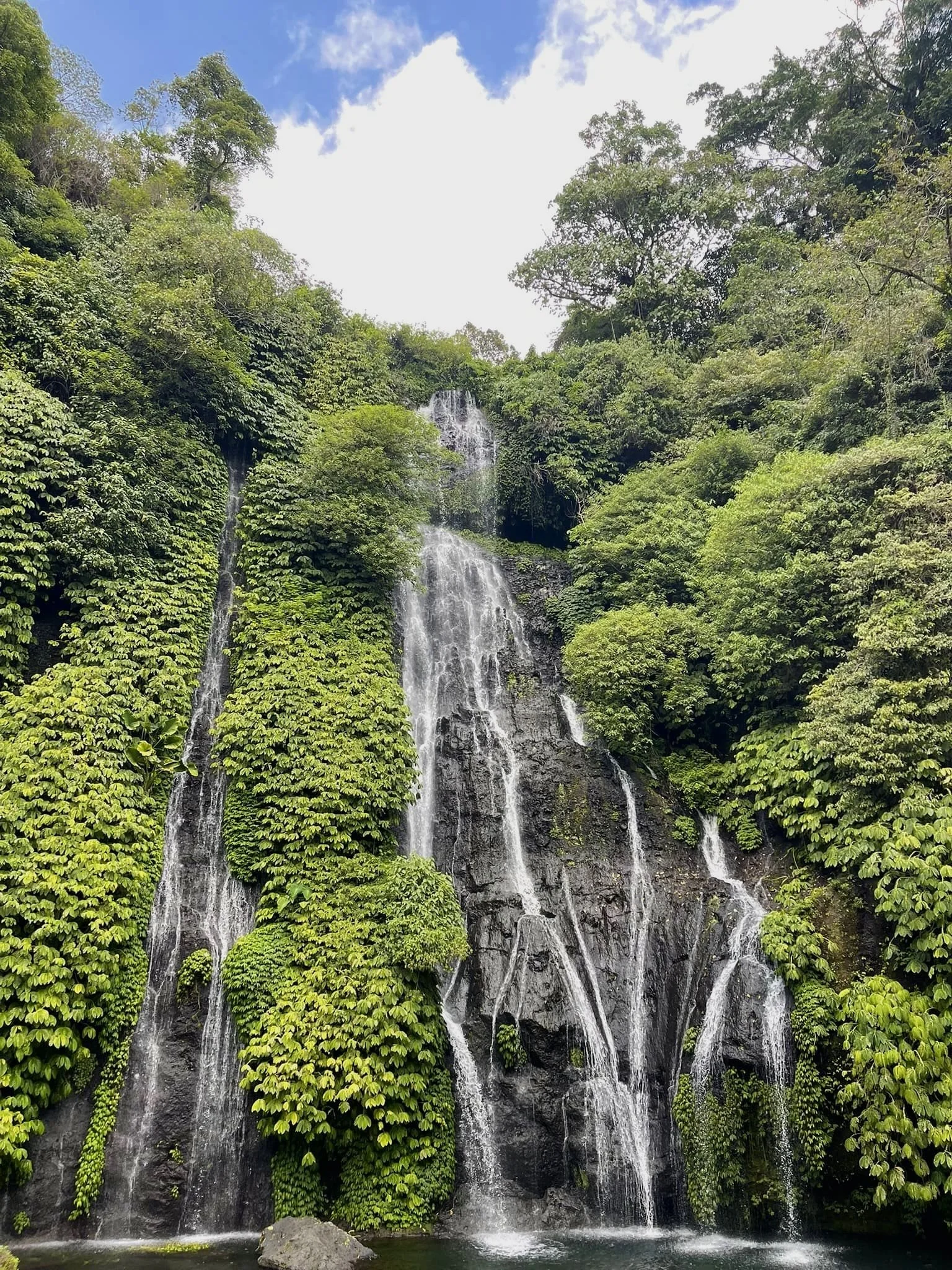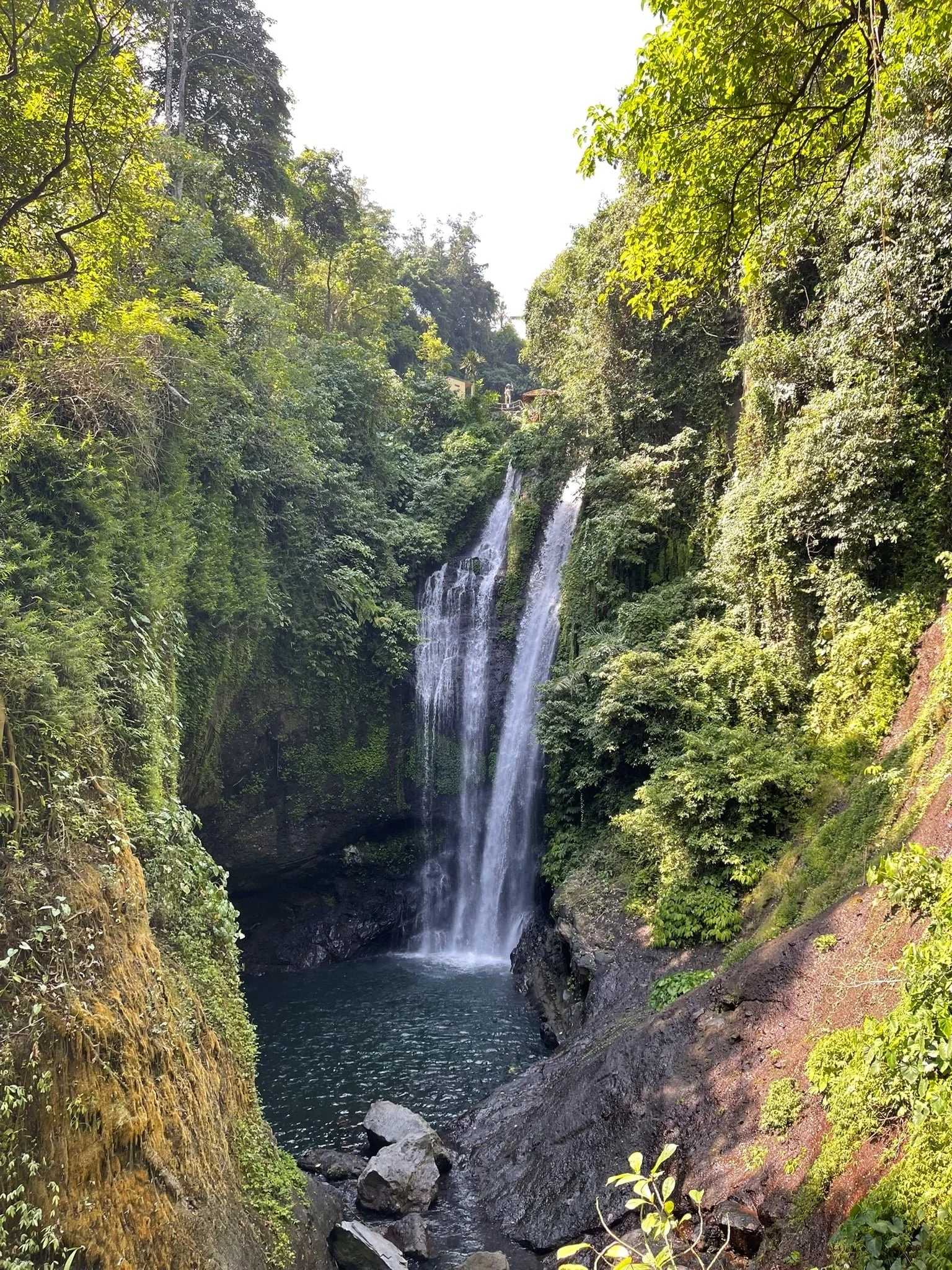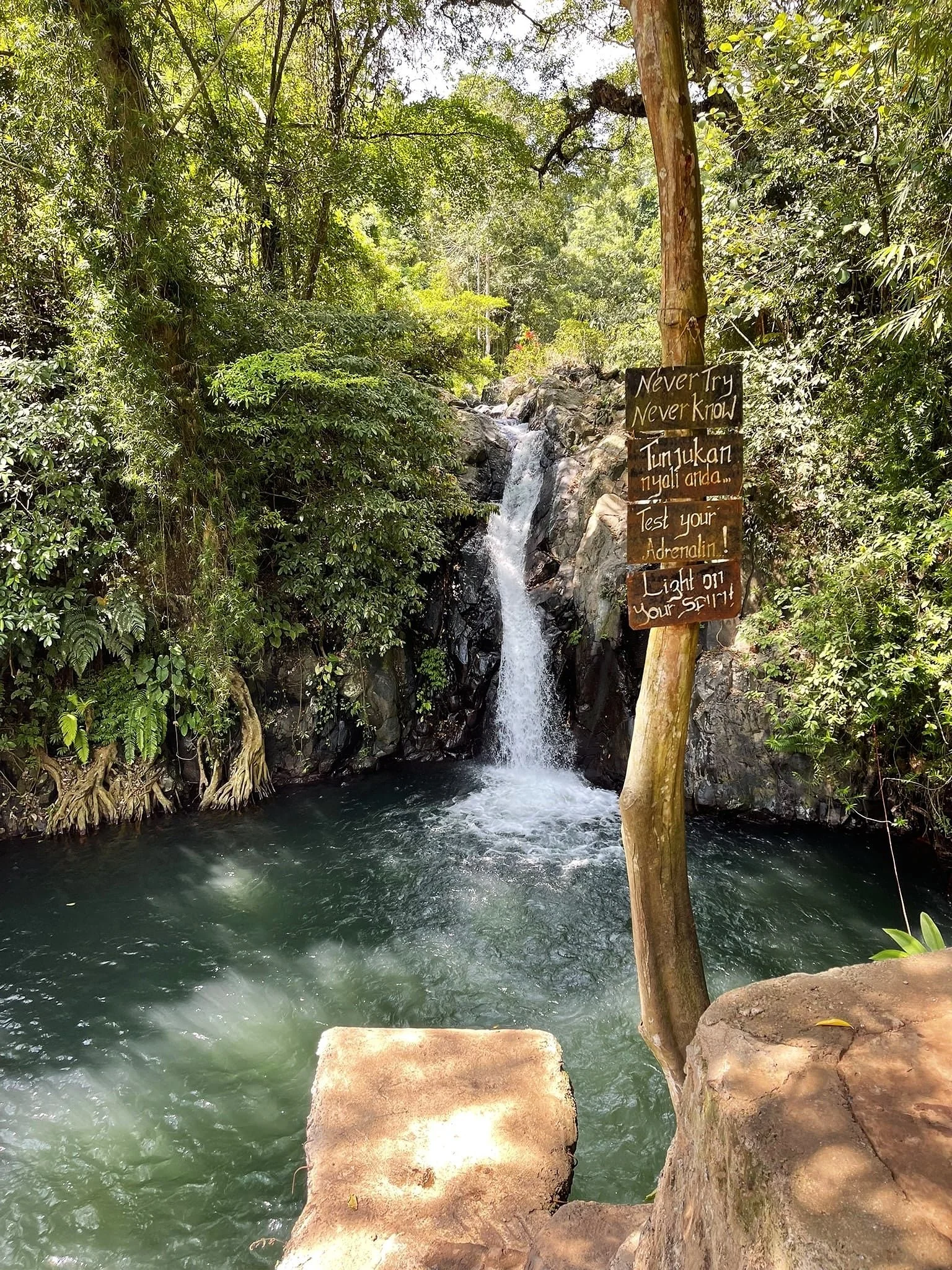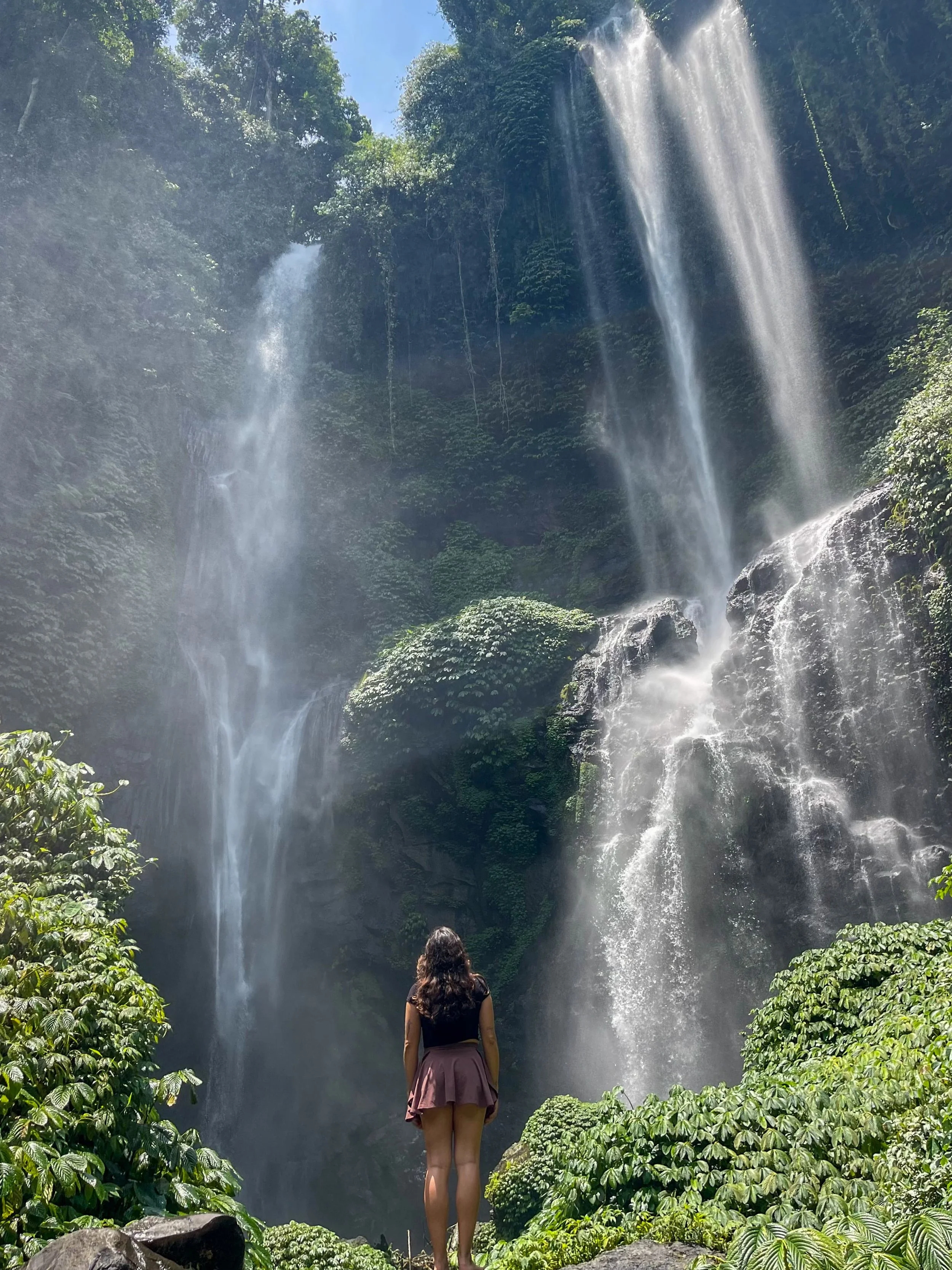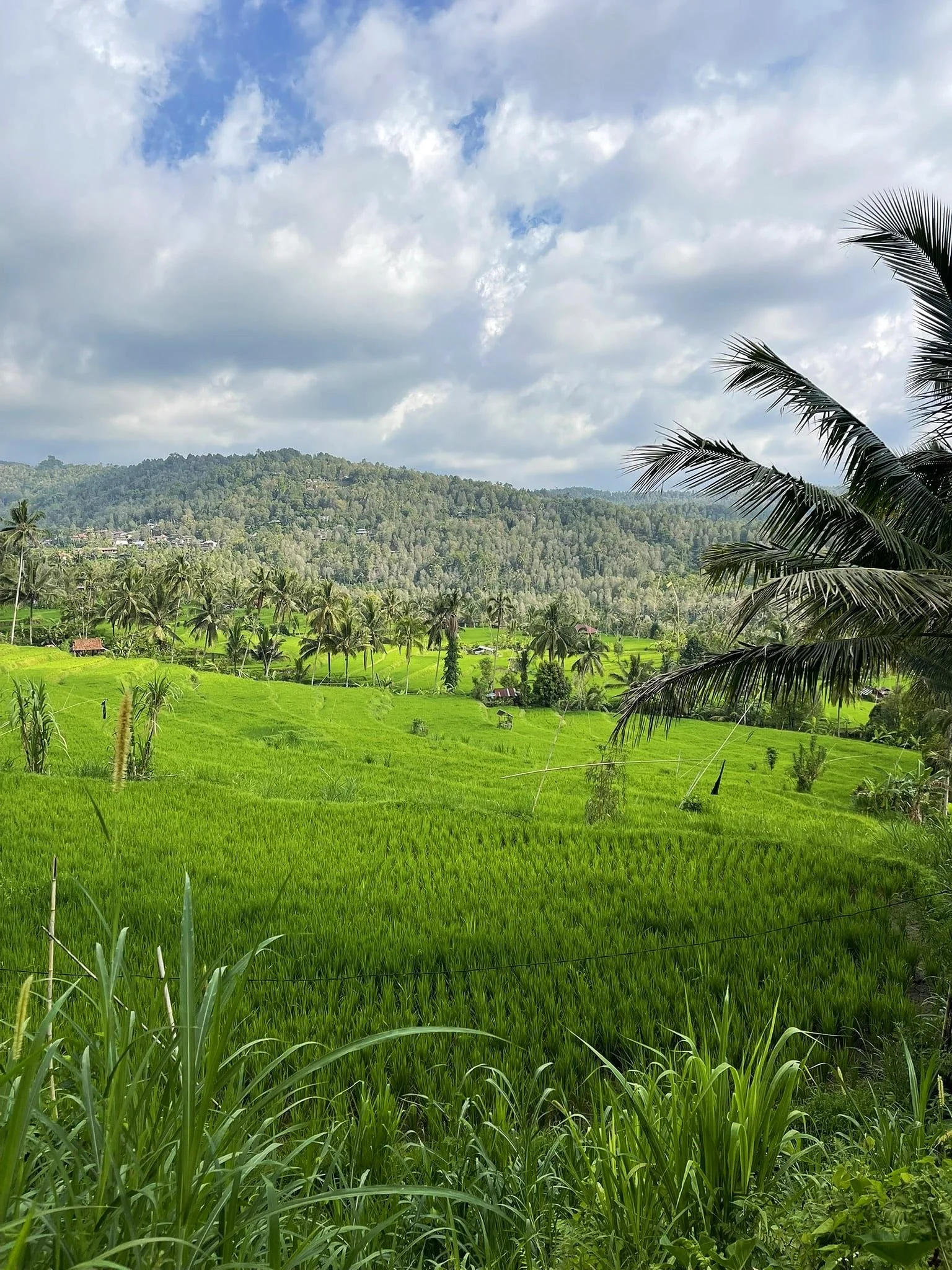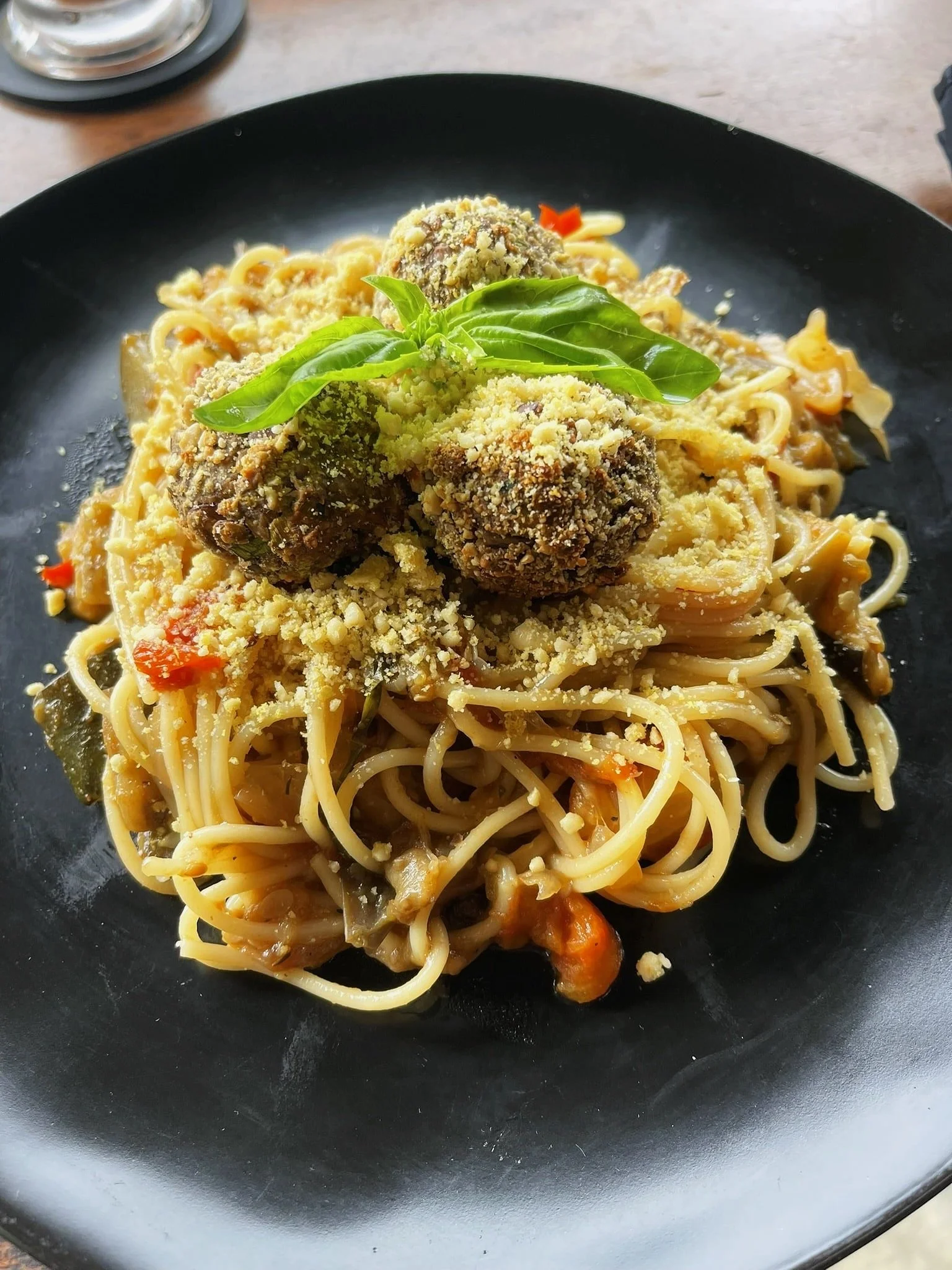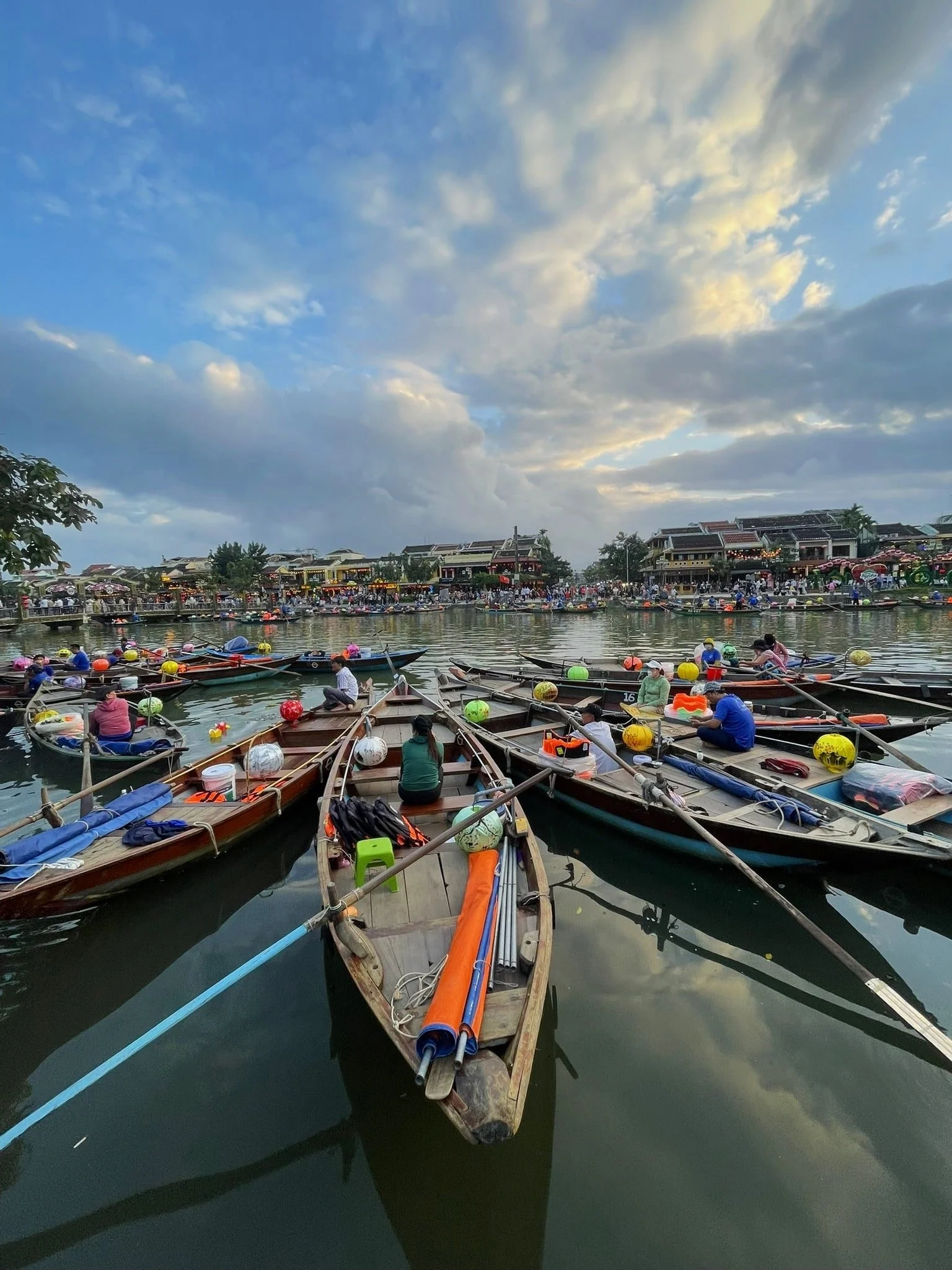Munduk Village Highlights: The Perfect One-Day Itinerary
Munduk Village, one of the last of Bali’s hidden gems, is a small village dotted with lush green palm trees and rice terraces. The landscape is flourishing with life, concealing some of the island’s most breathtaking untouched beauty. If you are heading to Munduk soon, this epic one-day itinerary will help you experience it all on a time crunch! From rice-terraced sunrises and sunsets to waterfalls and temples, Munduk offers all the experiences that make a trip to Bali truly unforgettable.
For more information on Munduk Village, including packing tips, where to stay, and more, head here! Oh & as always practice sustainable tourism while traveling, please :)
Disclaimer: This post contains affiliate links. If you click through and make a purchase, my blog may receive a commission at no additional cost to you.
Munduk VILLage: One-Day Itinerary
Munduk Itinerary Stop #1: A Rice Terraced Sunrise
Start your day by heading to Jatilwuh Rice Terraces for an otherworldly sunrise moment. Envision a pink and purple-hued sunrise over 600 hectares (almost 1500 acres) of lush green terraces—dreamy. Heading here for sunrise not only promises an unforgettable and epic morning but also lets you enjoy the rice terraces with fewer people and cooler temperatures.
Following the sunrise, you can enjoy either trekking or cycling through the rice terrace pathways that lead above, below, and through the fields, giving you views from every possible angle. You could get lost in these terraces for hours! Plenty of Warungs, shops, etc., are throughout the rice fields offering food, beverages, snacks, and my favorite, coconuts!
Fun Fact: Jatilwuh Rice Terraces were named a UNESCO World Heritage Site in 2012, ensuring it is kept pristine and well looked after. Everywhere you look is just flourishing with green.
The drive from Munduk Village is only a little over 1 hour and is quite a beautiful journey. There is also a small waterfall nearby, Air Tejun Yeh Hoo open for exploring and cooling off in!
Hours: 6:00 AM - 6:00 PM
Entrance Fees:
Foreigners: 50,000 IDR, Children: 40,000 IDR | Citizens: 15,000 IDR, Children: 5,000 IDR
Parking: Motorbike: 3,000 IDR | Car: 5,000 IDR
For a complete guide on Jatilwuh Rice Terraces including when to visit and what to do there, head here!
Munduk Itinerary Stop #2: Pura Ulun Danu Beratan & Handara Gate
On your way back towards Munduk Village from the Jatilwuh Rice Terraces, you can stop at the iconic water temple, Ulu Danu Beratan, and the famous Balinese landmark, Handara Gate.
Ulu Danu Beratan: In Balinese, Danu means 'lake' and refers to the goddess Danu, the queen of all bodies of water. The temple area is covered in flowers and the temple sits on the second largest lake in Bali, Lake Beratan, making this temple truly picturesque. At one point, this lake was the largest in Bali, until an earthquake broke the lake up into the 3 sections we have today: Beratan, Buyan, and Tamblingan. If you want to learn more information about the water temple and its history, head here.
This is a great spot for families and children, having an area dedicated specifically to younger ones. However, it can be a bit touristy.
Hours: 7:00 AM - 7:00 PM
Entrance Fee: 75,000 IDR (4.78 USD) Adults, 50,000 IDR (3.19 USD) Children | Citizens can enter for 40,000 IDR during weekdays and 50,000 IDR on weekends.
If you are looking for a tour that includes transportation and a guide, you can find the best one here!
Pro Tip: I arrived at the temple before 9:00 AM and it was not too busy. However, when I was leaving around 10:00 AM, many tours were arriving and there were a lot more people inside.
Handara Gate: A little further North of Ulu Danu Beratan Temple is Handara Gate, a famous photo spot and entrance to a golf course. The gates are a Balinese structure believed to connect the physical and spiritual world. They can be seen all over Bali, but people flock to Handara Gate due to its beautiful green backdrop. If you plan to head here, early in the morning is best to avoid lines and crowds. If you prefer a less touristy option, you can simply look out for them while you ride around Bali, I promise you will find plenty!
Munduk Itinerary Stop #3: Lakeside Views
Munduk Village sits near three of Bali’s stunning lakes: Beratan, Buyan, and Tamblingan. All of these lakes are conveniently located on your ride to Handara Gate and on the way to your next stop. Although you can easily enjoy lake views from your motorbike, I recommend pausing for a view either at one of the warungs for coffee and a quick snack or one of the stop-off points along each lake, including popular spots like Twin Lake Viewpoint and Wanagiri Hidden Hill. These locations have plenty of photo opportunities with swings, bamboo structures, and more. There is also a trekking trail that leads down to the lakes, though I have not tried it myself.
If you prefer to visit with a tour you can find one here.
Munduk Itinerary Stop #4: Splash into some Waterfalls
Munduk Village is surrounded by lush jungles that flourish with life, concealing some of the island's most stunning waterfalls—perfect for those ready to trek through the wilderness and uncover Indonesia’s beauty. There are so many of them for you to choose from and I will list some of the best ones below that I recommend. You can try to squish all of them into your one day or pick and choose which you want to see most!
Option 1: Banyu Wana Amertha Waterfall
Banyu Wana Amertha Waterfall is a series of 4 waterfalls within one area, located in Wanagiri, a small village only 13 KM (8 miles) from Munduk Village. The waterfalls are a short and easy trek, each one uniquely different from the others. It is less busy compared to the other waterfalls in Bali, and if you read the reviews, you can see that most people end up being the only ones there when they visit! When I was there, I saw very few people and had most of the falls to myself.
Waterfall #1 may be the most underwhelming, as it is just a small trickle pouring from the greenery above. However, its vibrant plant life and the pretty blue-tinted pool make it a serene spot.
A short walk away, Waterfall #2 is breathtaking, with multiple cascades flowing over three lush tiers into a shallow pool, while Waterfall #3 features four small falls over a black rock face with green leaves and a shallow pool below.
Waterfall #4, or Banyu Wana Amertha, is the main attraction on the trek, as it is the tallest and largest waterfall along the route. Multiple powerful cascades pour over the rock face, with lush green leaves, plants, and vines peeking out from every crevice. There is also plenty of space for swimming and relaxing in the pools below it.
Hours: 7:00 AM - 5:30 PM
Entrance Fees: 40,000 IDR (2.55 USD). You do not need a guide for these waterfalls.
Head here for more information on Banyu Wana Amertha Waterfall.
Option 2: Banyumala Twin Waterfalls
Banyumala Twin Waterfall, nearby to the previous waterfall, features two streams of water cascading down a rocky face with many plants, leaves, and flowers flourishing along it. Although this waterfall has become quite popular recently, it is still worth the visit! This tall 20-meter (65-foot) waterfall is beautiful, with the perfect pool below it for swimming around in to cool off. There is plenty of room in and around the waterfall, so even when the area becomes slightly crowded, you can spread yourself out and relax in another area.
You can visit both Banyumala and Banyu Wana Amertha easily since they are so close to one another.
Hours: 7:00 AM - 6:00 PM
Entrance Fees: The entrance fee to Banyumala Waterfall is 50,000 IDR (a little over 3.00 USD). You do not need a guide for these waterfalls.
Option #3: Aling Aling Waterfall
The Aling Aling Waterfall trek is a stunning natural spot in Sambangan, about 1 hour away from Munduk, but only 44 minutes from Handara Gate. It offers cliff jumping, swimming, and more. Along the path, you will encounter four separate waterfalls, making it an ideal spot to spend a few hours in the morning with family. There are some fantastic swimming areas to relax and cool off, with some shallower sections perfect for children. Life jackets are also available for added peace of mind.
The first waterfall, Aling Aling, towers 30 meters (100 feet), crashing down a rugged rock face into a natural pool. This waterfall is sacred and holy to the locals, so you cannot swim, jump, or enter the water here.
Each of the three following waterfalls offers cliff jumping at different heights. There are small cement platforms to jump from, and your guide will advise on where is safest to jump.
Kroya Waterfall has a 5-meter (16.5 feet) cliff jump, the perfect warm-up for the following jumps.
Kembar Waterfall ups the notch by doubling your previous jump to 10 meters (32 feet).
Pucuk Waterfall features a 15-meter (nearly 50 feet) plunge into the water!
Hours: 8:00 AM to 5:00 PM
Entrance Fees: If you choose NOT to jump or swim, you can enter for 20,000 IDR (1.29 USD). If you want to jump, swim, etc., the entrance fee is 125,000 IDR (8 USD) and includes a guide to keep you safe!
You could add this waterfall in before or after the previous two, however, this one is a 45-minute drive from them.
For a complete guide about visiting Aling Aling Waterfall, head here!
Option #4: Sekumpul Waterfall
Sekumpul Waterfall, towering over 80 meters tall (260 feet), is known to be one of the tallest and most picturesque waterfalls in Bali. Sekumpul is surrounded by a flourishing green jungle, offering a more remote and serene feeling compared to the other waterfalls in Bali. It is in the village of Sekumpul in the Singaraja region, hence the name, and is around one hour from Munduk. If you plan to visit this waterfall, I recommend heading here first before other waterfalls since it is the furthest away from Munduk and the other attractions.
Sekumpul translates to a bunch in Indonesian, referring to the collection of 7 waterfalls in the area, including the more popular Fiji Waterfall and Lemukih Waterfall, which has a natural waterslide. You can swim in the waterfalls.
Hours: 8:00 AM to 5:00 PM
Entrance Fees: There are two ways to experience Sekumpul, one from above and one from below. The entrance fee for the Sekumpul Waterfall Viewpoint (view from above) is 20,000 IDR (1.28 USD). The entrance fee for the trek to the bottom of the waterfall is 20,000 IDR (1.28)— do not fall for the scam! For more information on how to access these waterfalls without a guide, head here.
Option #6: Munduk Waterfall
If you prefer not to venture too far from Munduk but still want to experience a waterfall, you can head to Munduk Waterfall. This is another tall and beautiful waterfall but with a shorter trek through the jungle! Alongside Aling Aling, this is one of the easier waterfall treks, making it perfect for younger children. You can choose whether you want to see only the first, larger waterfall, or venture on to see a total of 4 waterfalls.
I will be honest, I was waterfalled out by the time I was about to visit Munduk Waterfall, and I regret missing it. You can see loads of beautiful photos on the Google reviews for reference should you choose to visit.
Hours: I actually do not know the hours on this one, but believe it is similar to the others: 8:00 AM - 6:00 PM.
Entrance Fee: 40,000 IDR (2.55 USD) for one waterfall or 110,000 IDR (7.01) for all 4.
Munduk Itinerary Stop #5: A Sunset over The Munduk rice terraces
After splashing around in as many waterfalls as you can fit into your day, head back to Munduk Village for sunset. Watching the sunrise over the rice terraces feels magical, but sunset completes the experience. Munduk is essentially a vast stretch of rice terraces and farmland, and watching the golden hour and sunset shine over them is truly picturesque. If you are looking for the best viewpoints for sunset, you can head to one of the many Warungs along Jalan Pura Puseh, like Warung Heaven or Warung Enjoy Cafe 2. The seating areas offer incredible elevated views over the rice terraces, with golden hour and sunset being the best times to visit.
If you want to take a walk through the rice terraces during golden hour, you can find a complete guide on how to do it here!
Munduk Itinerary Stop #6: Botanist for dinner
Believe me, I love my fair share of warung foods, curries, nasi goreng, etc., but sometimes you just want a plate of pasta or pizza! If you are feeling the same after spending a bit of time in Bali, The Botanist will fulfill your carbs and western food cravings. They offer pizzas, pasta, smoothie bowls, and more, with gluten-free pasta and several vegan options available. It is the perfect way to complete your epic, but tiring day exploring Munduk Village! I hope you enjoy Munduk as much as I did :)
For a complete list of the top 12 things to do in Munduk, head here!
General Information: Munduk
BEST TIME TO VISIT:
Rainy Season: November - March | Dry Season: April - October
The best time to visit Munduk, Bali is during the dry season from April to October. This will ensure you have the best weather for exploring the rice terraces, waterfalls, and more. If you plan to visit several waterfalls in this area, they will be more powerful just after the rainy season. (April/May) and will be a tad more dried up right before the rainy season. However, I visited Munduk and the waterfalls in October and they were still a beautiful sight.
HOW TO GET TO Munduk:
To get to Munduk, you must of course first fly into Bali. Bali’s only international airport, Gusti Ngurah Rai International (DPS) in Denpasar, is about 82 km (50–51 miles) from Munduk. When booking my flights around Asia, I always check Skyscanner for the best routes and deals. Not all regional airlines in Asia will populate on Google Flights.
From the airport, you must either order a taxi or rent a motorbike to reach Munduk. The drive can be as short as 1 hour and 50 minutes if you leave before 8:00 AM or after 7:00 PM and as long as 3 hours during high traffic times. Motorbikes tend to be faster than cars because they can weave around traffic.
Taxi: You can order a local taxi, Grab (rideshare app), or GoJek (rideshare app) from almost anywhere in Bali to Munduk.
Local taxis are available outside the airport or by booking through an accommodation.
If you prefer a private transfer from the airport, you can book one here.
If you would like a private driver for the entire day in Bali, you can book one here.
Grab is better than GoJek for longer distances (from my experience). I have had GoJek drivers arrive to pick me up and ask for more money, and when I said no, they turned around and drove away.
For either app, you can ride in a car or on the back of a motorbike. The motorbike is the cheaper option by far. If you have more bags or are uncomfortable being on the back of a bike weaving through cars for longer hot hours, I do not recommend taking the back seat of a motorbike. You will also have to hold your bags unless they are small enough to fit in the front of the bike.
A car is a more comfortable option, but it can take longer with traffic. Car prices vary a lot depending on the time of day and demand.
Motorbike: Motorbike rental businesses are everywhere in Bali for you to choose from. Some are overpriced and untrustworthy, so be sure to read reviews. For my last rental, I used Bikago. They also do bike delivery and pick-up! You can arrange a rental through their website before you arrive. Bali Best Motorcycle is another great option.
Be aware that the roads leading to Munduk are not in perfect condition—the infrastructure in Bali is not great overall. You need to be a confident driver, especially during high-traffic times when navigating around cars and other obstacles. If you have bags, you need to either wear them or place them by your feet while riding.
Always wear your helmet and have your international driver’s license with you in case you are pulled over or stopped by local police. I have only been pulled over once for my friend not wearing a helmet.
Pro Tip: Many foreigners traveling to Indonesia receive a 30-day Visa on Arrival upon entry for 500,000 IDR (30 USD) that can be extended an additional 30 days for an additional fee. You can find more information on which countries qualify and apply for this VOA online, here.
How to get around Munduk:
The best form of transport in Munduk is by motorbike. Points of interest are a bit spread apart, and the area is very hilly, so walking could take too long. Daily motorbike rentals are usually around 80,000/90,000 IDR (per day) for a small motorbike or scoopy. The larger the bike, the more expensive it will be. You will find better deals for longer-term rentals versus daily. Be sure to negotiate pricing, as some places will just throw out a more expensive price to see if you will take it. As mentioned, I rent my bike from Denpasar.
There are local taxis around, which you can usually hire from your accommodation or through Grab/Gojek.
You can hire a private driver for the entire day, here.
Where To Stay:
Munduk is a village perched above a lush valley of rice terraces close to Tamblingan Lake. It is a small village, so there is no “better” area to stay. There are many beautiful accommodations throughout the area. I chose to stay at Bali Rahayu Homestay, which had a very cozy room and bed, as well as a beautiful view over some of the rice terraces, especially during sunset.
Best Accommodation Options For Every Traveler: Munduk
Backpacker/Hostel Option: Dong Paloh Hostel (Dorm) or Made Oka Homestay and Warung (Private Room)
Best Low-Budget: Nadya Homestay or Munduk V View House or Bali Rahayu Homestay (I stayed here and really enjoyed my stay).
Best Mid-Budget: Moondock Luxury Camp or Gumi Ayu EcoStay
Best Luxury Budget: Munduk Cabins or Elevate Bali
You can also find hotel deals at Agoda and Hostel World!
What to eat:
There are so many delicious Warungs around that you really cannot go wrong. Below I have included my top places to eat (being mostly plant-based and gluten-free).
Pro Tip: When you are eating gluten-free in the Warungs, you can order most dishes without soy sauce. “Wheat” in Indonesian is “gandum,” and “Saya allergie kecap” means you are allergic to soy.
Is Munduk Safe?
Munduk felt safe to me—it is a quieter area compared to other destinations in Bali, which makes it a nice escape from the crowds everywhere else. However, I recommend staying up to date with your country’s travel advisories. Follow basic rules of safety while traveling in addition to:
Always triple-check vaccination requirements and recommendations for countries. Some potential illnesses include Typhoid and Hepatitis A.
Pack mosquito spray to protect yourself from Dengue and Malaria. There have been recent cases of Dengue in the region.
Wear your helmet when riding your motorbike. So many people do not wear their helmets, which could save your life.
DO NOT drink the tap water. Keep your mouth closed in the shower and even use bottled water for toothbrushing, especially if you have a sensitive stomach like me!
Mistakes can happen, especially when trekking and walking around slippery areas, so I recommend always having some form of travel medical insurance. Safety Wing is by far the best travel medical insurance. It has saved me numerous times by covering hospital visits when I was sick during my travels in Asia.
Get an eSIM—so you do not get lost navigating your way. I always use Airalo for my eSims.
Emergency Contact Number: Police: +62 110 | Fire: +62 113 | Ambulance: +62 118 or +62 119
You can find a complete list of Bali Emergency #’s here.

